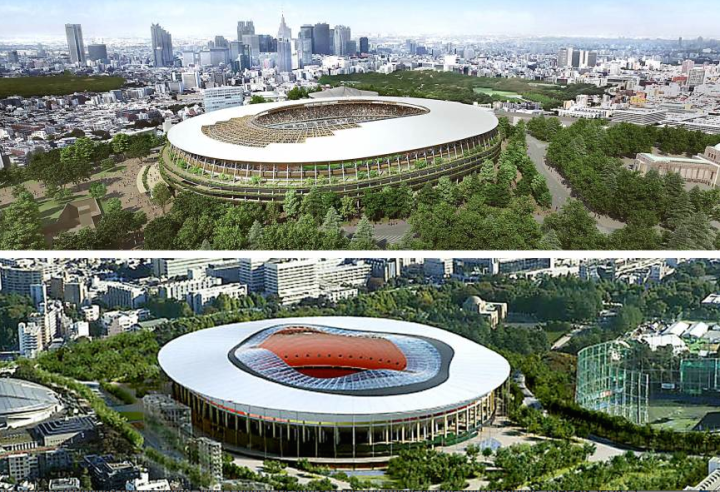
While they were unveiled anonymously as simply Design A and Design B, the two stadium proposals are thought to have been created by acclaimed Japanese architects Kengo Kuma and Toyo Ito.
Oval-shaped Design A, likely the work of Kuma, stands 50 meters high and comprises an abundance of wood and greenery, while the more futuristic-looking Design B, probably by Ito, is slightly taller at 54 meters and features a wavy, circular roof, exterior glass walls, and 72 wooden pillars. Both will be able to accommodate up to 80,000 sports fans.
Commenting on the efforts, architect and critic Takashi Moriyama said he prefered Design B “because it allows people to enjoy walking around the facility or gather.” He added that it also “carries over the atmosphere of the old National Stadium,” which was recently demolished to make way for the new construction.
President of the sports council Kazumi Ohigashi promised his team will “work to ensure a stadium that will be loved by all,” adding that it’ll not only put athletes first, but also ensure excellent accessibility for the handicapped, elderly, and children.
The two proposals will now be examined by a specially selected panel, with a final decision expected in the coming weeks, according to the Japan Times.

The scrapped stadium design (above), by British-Iraqi architect Zaha Hadid, featured a retractable roof with two supporting arches. While the futuristic design was mocked by some for resembling a toilet bowl, a more serious concern related to its cost.
The estimate for the original design, announced in 2012, was ¥130 bn ($1.1 bn). But as spiraling costs took the expected bill to ¥252 bn ($2.1 bn), growing protests persuaded the government to ditch the design in July.
Construction costs for each of the two new designs have been put at around ¥155 bn ($1.3 bn), significantly lower than Hadid’s design. But whether it can stay on budget remains to be seen.


